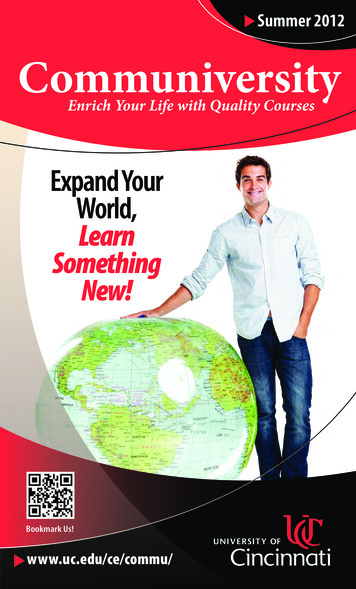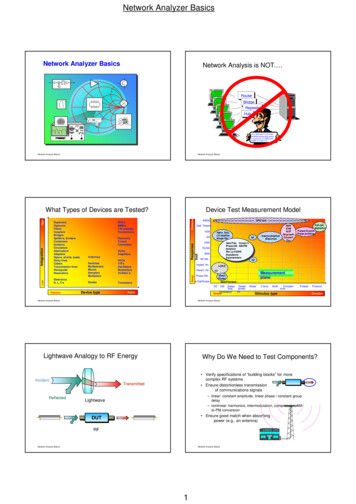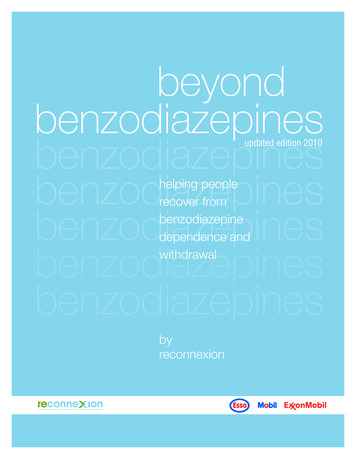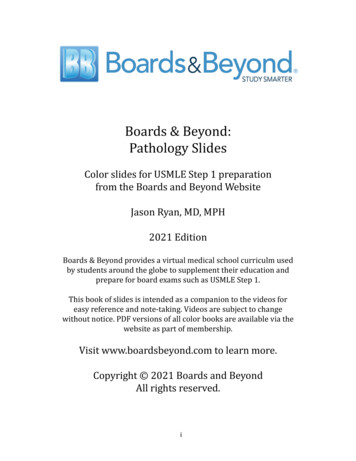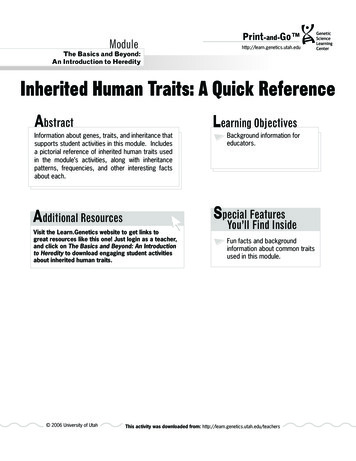
Transcription
ModuleThe Basics and Beyond:An Introduction to HeredityPrint-and-Go http://learn.genetics.utah.eduInherited Human Traits: A Quick ReferenceAbstractLearning ObjectivesAdditional ResourcesSpecial FeaturesInformation about genes, traits, and inheritance thatsupports student activities in this module. Includesa pictorial reference of inherited human traits usedin the module’s activities, along with inheritancepatterns, frequencies, and other interesting factsabout each.Visit the Learn.Genetics website to get links togreat resources like this one! Just login as a teacher,and click on The Basics and Beyond: An Introductionto Heredity to download engaging student activitiesabout inherited human traits. 2006 University of UtahBackground information foreducators.You’ll Find InsideFun facts and backgroundinformation about common traitsused in this module.This activity was downloaded from: http://learn.genetics.utah.edu/teachers
Print-and-Go ModuleThe Basics and Beyond:An Introduction to Heredityhttp://learn.genetics.utah.eduInherited Human Traits: A Quick ReferenceBackground InformationPhysical traits are observable characteristics determined by specific segments of DNA called genes. Multiplegenes are grouped together to form chromosomes, which reside in the nucleus of the cell. Every cell (excepteggs and sperm) in an individual’s body contains two copies of each gene. This is due to the fact that bothmother and father contribute a copy at the time of conception. This original genetic material is copied each timea cell divides so that all cells contain the same DNA. Genes store the information needed for the cell to assembleproteins, which eventually yield specific physical traits.Most genes have two or more variations, called alleles. For example,the gene for hairline shape has two alleles – widow’s peak or straight.An individual may inherit two identical or two different alleles fromtheir parents. When two different alleles are present they interactin specific ways. For the traits included in this activity, the allelesinteract in what is called a dominant or a recessive manner. Thetraits due to dominant alleles are always observed, even when arecessive allele is present. Traits due to recessive alleles are onlyobserved when two recessive alleles are present. For example, theallele for widow’s peak is dominant and the allele for straight hairlineis recessive.If an individual inherits:Figure 1: Inheritance Patterns of the Widow's Peak TraitW dominant widow's peak allellew recessive straight hairline alleleResults of Allele Combinations:WW Widow's Peak TraitWw Widow's Peak Traitww Straight Hairline Trait Two widow’s peak alleles (both dominant), their hairline will have a peak One widow’s peak allele (dominant) and one straight hairline allele (recessive), they will have a widow’s peak Two straight hairline alleles (recessive), their hairline will be straight.A widespread misconception is that traits due to dominant alleles are the most common in the population.While this is sometimes true, it is not always the case. For example, the allele for Huntington’s Disease isdominant, while the allele for not developing this disorder is recessive. At most, only 1 in 20,000 people will getHuntington’s; most people have two recessive, normal alleles.While a few traits are due to only one gene (and its alleles), most human genetic traits are the product ofinteractions between several genes.The traits listed on the next pages have commonly been presented as being determined by single genes.However, several have been shown to involve more than one gene, and research studies do not agree on theinheritance patterns of others. 2006 University of UtahThis activity was downloaded from: http://learn.genetics.utah.edu/teachers
Print-and-Go ModuleThe Basics and Beyond:An Introduction to Heredityhttp://learn.genetics.utah.eduInherited Human Traits: A Quick ReferenceEarlobe AttachmentAttached EarlobesDetached EarlobesIf earlobes hang free, they are detached. If they attach directly to the side of the head, they are attachedearlobes.Some scientists have reported that this trait is due to a single gene for which unattached earlobes isdominant and attached earlobes is recessive. Other scientists have reported that this trait is probably dueto several genes.The size and appearance of the lobes are also inherited traits.Tongue RollingCan Roll TongueCan’t Roll TongueIn 1940, the famous geneticist Alfred Sturtevant noted that about 70% of people of European ancestryare able to roll up the lateral edges of the tongue, while the remaining 30% were unable to do so.Tongue rolling ability may be due to a single gene with the ability to roll the tongue a dominant trait andthe lack of tongue rolling ability a recessive trait. However, there is some question about the inheritanceof tongue rolling. Recent studies have shown that around 30% of identical twins do not share the trait.Cleft ChinThis trait is reportedly due to a single gene with a cleft chin dominant and a smooth chin recessive. 2006 University of UtahThis activity was downloaded from: http://learn.genetics.utah.edu/teachers
ModuleThe Basics and Beyond:An Introduction to HeredityPrint-and-Go http://learn.genetics.utah.eduInherited Human Traits: A Quick ReferenceDimplesDimplesDimples are reportedly due to a single gene with dimples dominant (people may exhibit a dimple on onlyone side of the face) and a lack of dimples recessive.HandednessSome scientists have reported that handedness is due to a single gene with right handedness dominantand left handedness recessive. However, other scientists have reported that the interaction of two genesis responsible for this trait.FrecklesThis trait is reportedly due to a single gene; the presence of freckles is dominant, the absence of frecklesis recessive1.Naturally Curly HairEarly geneticists reported that curly hair was dominant and straight hair was recessive. More recentscientists believe that more than one gene may be involved.AllergiesWhile allergic reactions are induced by things a person comes in contact with, such as dust, particularfoods, and pollen, the tendency to have allergies is inherited. If a parent has allergies, there is a one infour (25%) chance that their child will also have allergy problems. This risk increases if both parents haveallergies2.12Rostand, J and Tétry, A . An Atlas of Human Genetics (1964) Hutchinson Scientific & Technical, London.“All About Allergies”, The Nemours Foundation lergy p2.h 2006 University of UtahThis activity was downloaded from: http://learn.genetics.utah.edu/teachers
Print-and-Go ModuleThe Basics and Beyond:An Introduction to Heredityhttp://learn.genetics.utah.eduInherited Human Traits: A Quick ReferenceHand ClaspingCross Left Thumb Over RightCross Right Thumb Over LeftFold your hands together by interlocking your fingers without thinking about it. Which thumb is on top– your left or your right?One study found that 55% of people place their left thumb on top, 45% place their right thumb on top and1% have no preference.A study of identical twins concluded that hand clasping has at least some genetic component. However,other scientists have not found evidence that genetics plays a significant role in determining this trait.ColorblindnessColorblindness is due to a recessive allele located on the X chromosome. Women have two Xchromosomes, one of which usually carries the allele for normal color vision. Therefore, few women arecolorblind. Men only have one X chromosome, so if they carry the allele for colorblindness, they will exhibitthis trait. Thus, colorblindness is seen more frequently in men than in women.Hairline ShapeWidow’s Peak HairlineStraight HairlineHairline shape is reportedly due to a single gene with a widow’s peak dominant and a straight hairlinerecessive. 2006 University of UtahThis activity was downloaded from: http://learn.genetics.utah.edu/teachers
Print-and-Go ModuleThe Basics and Beyond:An Introduction to Heredityhttp://learn.genetics.utah.eduInherited Human Traits: A Quick ReferencePTC TastingDoes Not Taste PTCTastes PTCFor some people the chemical phenylthiocarbamide (PTC) tastes very bitter. For others, it is tasteless.The ability to taste PTC shows dominant inheritance and is controlled by a gene on chromosomes 7. Thisgene codes for part of the bitter taste receptor in tongue cells. One of its five alleles (forms) causes alack of ability to sense bitter tastes; the other four alleles produce intermediate to fully sensitive tasteabilities. Approximately 75% of people can taste PTC while the remaining 25% cannot.PTC-like chemicals are found in the Brassica family of vegetables, such as cabbage, brussels sprouts, andbroccoli. People who can taste PTC often do not enjoy eating these vegetables, since they taste bitter tothem. Non-tasters tend not to notice bitter tastes and therefore may be more likely to become addicted tonicotine (which is bitter).PTC-tasting ability has also provided information related to human evolution. Populations in Sub-SaharaAfrica, and people who are descended from this area, contain at least five forms of the gene. Some ofthese forms confer a PTC-tasting ability that is intermediate between taster and non-taster. However, withonly a few exceptions, only two forms – taster and non-taster – are found in populations outside of Africaand their descendents. This is consistent with the out-of-Africa hypothesis of modern human origins.Some scientists think that tasters have fewer cavities, suggesting that there might be a substance in thesaliva of tasters that inhibits the bacteria that cause cavities to form. Others think that PTC tasting maybe in some way connected with thyroid function.PTC tasting was a chance discovery in 1931. 2006 University of UtahThis activity was downloaded from: http://learn.genetics.utah.edu/teachers
Print-and-Go ModuleThe Basics and Beyond:An Introduction to Heredityhttp://learn.genetics.utah.eduInherited Human Traits: A Quick ReferenceCreditsUnless otherwise noted, all information is from Online Mendelian Inheritance in Man (www.ncbi.nlm.nih.gov/omim/)Created by:Louisa Stark, Genetic Science Learning CenterMolly Malone, Genetic Science Learning CenterHarmony Starr, Genetic Science Learning CenterHarmony Starr, Genetic Science Learning Center (illustrations)FundingA Howard Hughes Medical Institute Precollege Science Education Initiative for Biomedical Research InstitutionsAward (Grant 51000125).Funding for significant revisions:Grant U33MC00157 from the Health Resources and Services Administration, Maternal and Child Health Bureau,Genetic Services Branch. Partners in the Consumer Genetics Education Network (CGEN) include HRSA, Marchof Dimes, Dominican Women’s Development Center, Charles B. Wang Community Health Center, GeneticScience Learning Center at University of Utah, Utah Department of Health and the National Human GenomeCenter at Howard University. 2006 University of UtahThis activity was downloaded from: http://learn.genetics.utah.edu/teachers
genes are grouped together to form chromosomes, which reside in the nucleus of the cell. Every cell (except eggs and sperm)




